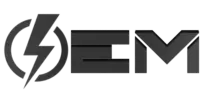Explore the intricacies of Current-to-Frequency Converters, their operation, applications, pros and cons in our comprehensive guide.

Introduction to Current-to-Frequency Converters
Current-to-Frequency converters (C/F converters) are an integral component in the field of electronics and digital communication systems. They offer a method of converting an analog signal, in this case, current, into a digital signal, frequency. This article aims to delve into the workings of these converters, their applications, and their advantages.
The Principle of Operation
C/F converters function on a relatively straightforward principle. The input current charges a capacitor at a constant rate. Once the charge on the capacitor reaches a certain threshold, it triggers a flip-flop circuit and discharges. Each discharge of the capacitor corresponds to a pulse in the output frequency. Hence, a higher input current results in a higher frequency of output pulses.
Types of Current-to-Frequency Converters
- Linear C/F Converters: These converters provide an output frequency directly proportional to the input current. They are commonly used in situations requiring high precision and accuracy.
- Logarithmic C/F Converters: Unlike linear converters, the output frequency in logarithmic converters is proportional to the logarithm of the input current. These are useful when dealing with a large dynamic range of input current.
Components of a C/F Converter
A typical C/F converter consists of several key components: an integrator, a comparator, a flip-flop, and a reset mechanism.
- Integrator: This is where the input current charges a capacitor.
- Comparator: This component monitors the voltage across the capacitor. Once the voltage reaches a certain threshold, it triggers the next stage.
- Flip-Flop: Triggered by the comparator, this stage generates a pulse in the output frequency and triggers the reset mechanism.
- Reset Mechanism: This mechanism discharges the capacitor, resetting the process.
Applications of C/F Converters
C/F converters are widely used in many fields such as process control systems, digital communication systems, and electronic instrumentation. They serve a crucial role in converting the continuous time-domain signals into frequency-domain signals, which can be easily processed and analyzed by digital systems.
Advantages of Current-to-Frequency Converters
Current-to-Frequency converters offer numerous advantages, making them indispensable in various fields.
- Noise Resistance: C/F converters are less prone to signal degradation due to noise because frequency signals are more immune to noise as compared to analog signals. This makes them advantageous in scenarios where the signal has to travel through a noisy environment.
- High Precision: These converters are known for their high precision and accuracy, especially over long periods, making them suitable for tasks that demand high precision.
- Wide Dynamic Range: C/F converters can handle a broad range of input current levels, especially in the case of logarithmic C/F converters.
Disadvantages of Current-to-Frequency Converters
While C/F converters have their benefits, they also come with certain drawbacks.
- Speed Limitations: The converter’s operating speed may be limited by the time taken to charge and discharge the capacitor.
- Susceptibility to Temperature Changes: The performance of these converters can be influenced by temperature variations, potentially affecting the accuracy of the output frequency.
Conclusion
In conclusion, Current-to-Frequency converters are essential tools in the field of electronics and digital communication systems. They play a pivotal role in transforming time-domain signals into frequency-domain signals, which makes digital processing and analysis significantly easier and more efficient.
Despite certain drawbacks such as speed limitations and susceptibility to temperature changes, their advantages like noise resistance, high precision, and wide dynamic range overshadow their limitations. With continued advancements in technology, we can anticipate the development of C/F converters that mitigate these challenges, thereby opening new avenues in electronic and digital systems.

